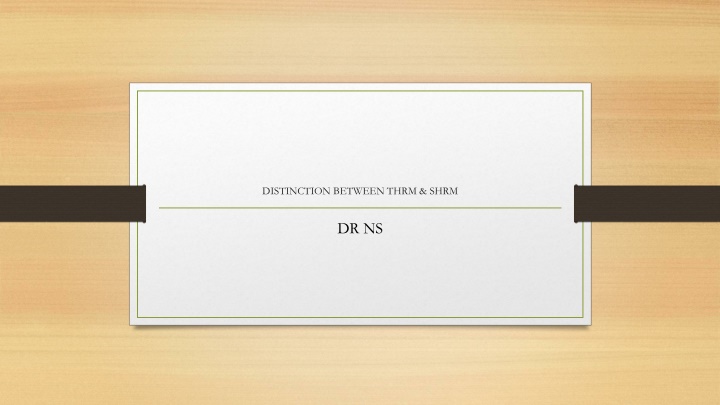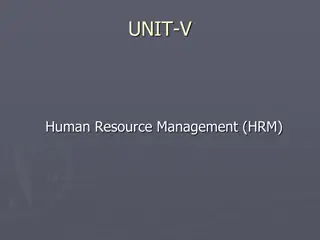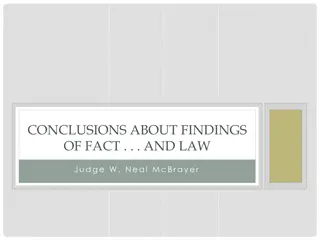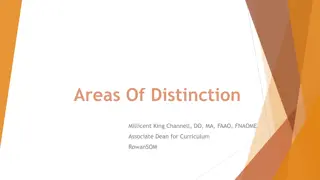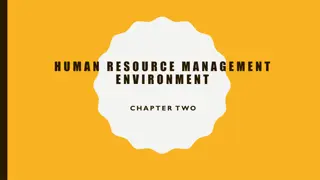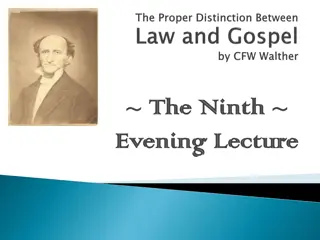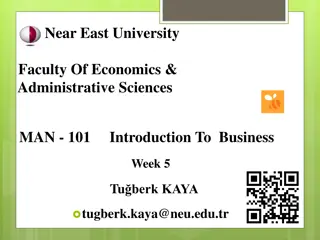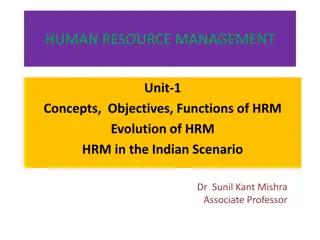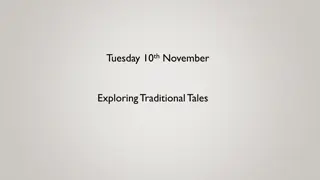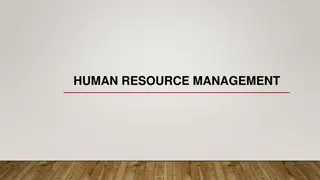Distinction Between Traditional HRM and Strategic HRM" (80 characters)
Traditional HRM, focused on managing HR for organizational goals until the 1990s, contrasts with Strategic HRM, which emphasizes proactiveness, strategic roles, democratic control, and quality/performance of work. The two approaches differ in their approach to administration, control, policies, focus, leadership style, job design, retention of employees, and employee loyalty and development practices. Strategic HRM looks beyond quantity of work to emphasize quality and performance, showcasing a transformational leadership style and flexibility in job design, among other distinctions, highlighting the evolution in HR management practices. (481 characters)
Download Presentation

Please find below an Image/Link to download the presentation.
The content on the website is provided AS IS for your information and personal use only. It may not be sold, licensed, or shared on other websites without obtaining consent from the author.If you encounter any issues during the download, it is possible that the publisher has removed the file from their server.
You are allowed to download the files provided on this website for personal or commercial use, subject to the condition that they are used lawfully. All files are the property of their respective owners.
The content on the website is provided AS IS for your information and personal use only. It may not be sold, licensed, or shared on other websites without obtaining consent from the author.
E N D
Presentation Transcript
Traditional HRM MANAGING HRM IN ORDER TO ACHIEVE ORGANISATIONAL GOALS EXISTED TILL 1990 1991 LPG HR AS VALUABLE ASSET PROACTIVENESS STRATEGIC ROLE
THRM SHRM 1. TRADITIONAL APPROACH 1. PRO- ACTIVE APPROACH 2. STRICT CONTROL 2. LENIENCY FROM MANAGEMENT 3. SHORT TERM POLICIES 3. SHORT TERM, MEDIUM AND LONG TERM 4. FOCUS ONLY ON ADMINISTRATION 4. FOCUS ON HR STRATEGY & OPERATIONS 5. BUREAUCRATIC CONTROL 5. DEMOCRATIC CONTROL WITH FLEXIBILITY
THRM SHRM 6. EMPHASIS ONLY ON QUANTITY OF WORK 7. LEADERSHIP IS TRANSACTIONAL 6. EMPHASIS IS ON QUALITY AND PERFORMANCE OF WORK. 7. LEADERSHIP STYLE TRANSFORMATIONAL 8. FLEXBILITY IN JOB DESIGN 8. DIVISION OF LABOUR & SPECIALISATION 9. RETENTION OF EMPLOYEES NO EFFORT 10. COMPLETION OF JOB ASSIGNED TO EMPLOYEES 9. EMPLOYEE LOYALTY * RETENTION OF EMPLOYEES 10. DEVELOP PRACTICES SUITABLE FOR EMPLOYEES.
